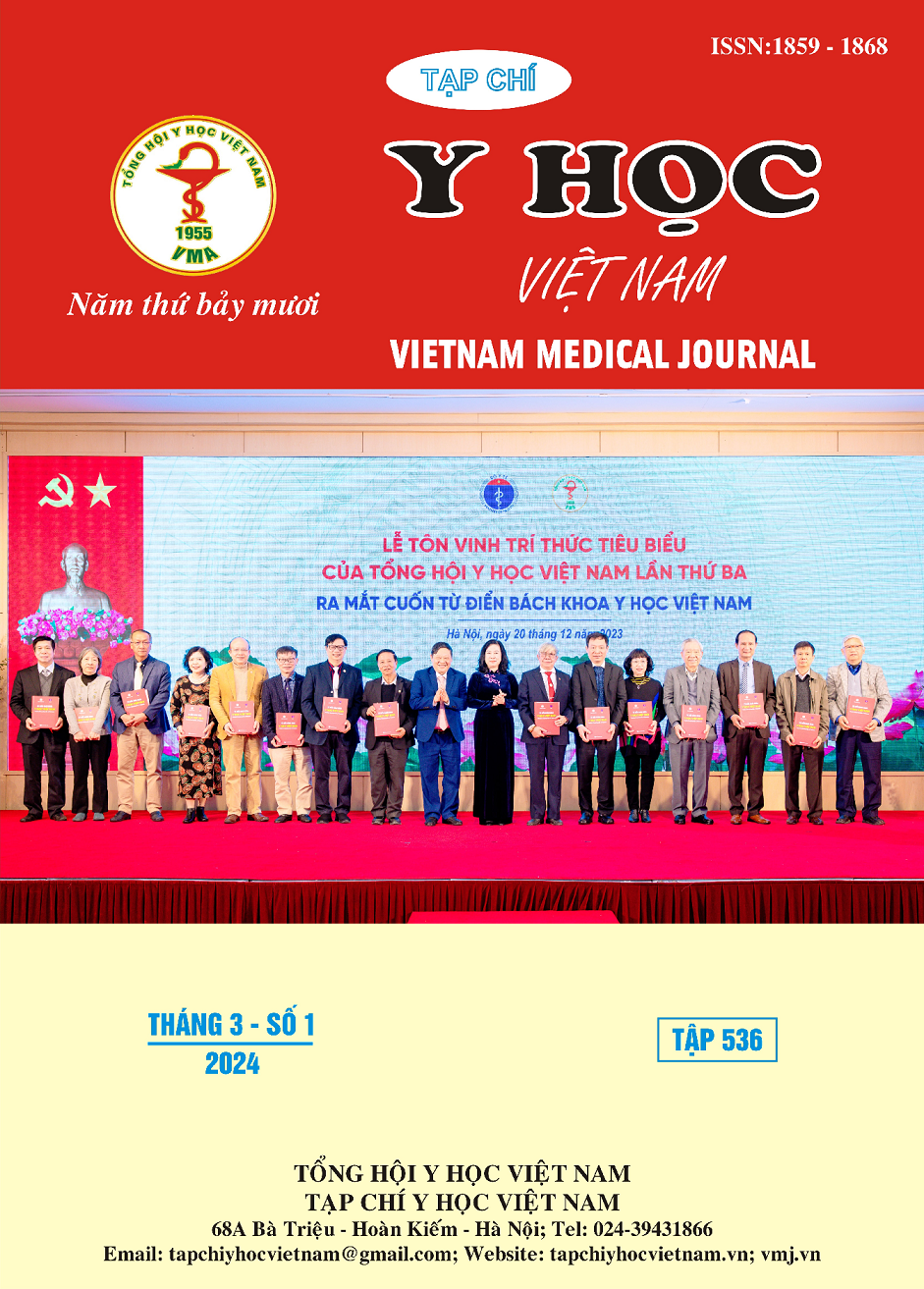THE RESULTS OF TREATMENT OF COMPLICATIONS OF PERFORATED COLONIC DIVERTICULITIS AT VIET DUC FRIENDLY HOSPITAL
Main Article Content
Abstract
Objectives: The results of treatment of complications of perforated colonic diverticulitis at Viet Duc Friendly Hospital from 2018 to 2022. Method: Cross-sectional retrospective description of all patients diagnosed with perforation complications due to colonic diverticulitis and treatment at Viet Duc Friendly Hospital from January 2018 to December 2022. Results: Includes 54 patients (15 female and 39 male), the mean age was 60.14 ± 14.7 years old, symtoms include abdominal pain (92.6%), fever (44%), shock (7,4%). The majority of diverticulitis perforation sites are located in the left colon (64.8%), and the right colon accounts for 35.2% on computed tomography. Classification of lesion images according to Hinchey classification stage Ib, II, III, IV are 22.2%, 44.4%, 26%,7.4%. 51.8% of patients received medical treatment, of which 17.9% of patients received a combination of antibiotics and abscess drainage. 48.2% of patients had surgery, of which 73.1% had indications for emergency surgery according to Hinchey stage II, III, IV, 5.3%, 73.7%,21%; indications for surgery of the left colon were the majority (80.8%), while 19.2% were for the right colon, 17 patients had the Hartmann‘s procedure (65.4%), 7 patients had the surgery sessions (26.9%) were all stage II and had primary anastomosis. Treatment time according to the Hinchey classification was 10.5 ± 5.6 days for stage Ib, 12 ± 6.8 days for stage II medical treatment, 10 ± 3 days for stage II surgical treatment, 13 9 ± 6.5 days for stage III, 20.25 ± 8.8 days for stage IV. The rate of patients with postoperative wound infection was 50%. Conclusion: Colon diverticulitis complicated by perforation is common in middle-aged people, with a male predominance. Common clinical symptoms are abdominal pain, fever and shock. Diagnosis is mainly based on computed tomography and right diverticulum perforation has a better prognosis than the left; the rate of Hinchey stages III and IV is still high. Therefore, we need to evaluate well the stage of perforated diverticulitis to have a timely and appropriate treatment strategy for each patient.
Article Details
References
2. Nguyễn Quang Quyền (1990). Bài giảng giải phẫu học tập II, NXB y học, 152-180.
3. Trịnh Văn Minh (2007). Giải phẫu người, NXB y học, Hà Nội. 427-480.
4. Connell AM: Applied physiology of the colon: Factors relevant to diverticular disease. Clingastroenterol 1975;4:23-36.
5. Stollman N, Raskin JB. Diverticular disease of the colon. The Lancet. 2004;363(9409):631-639.
6. Sartelli M, Weber DG, Kluger Y, et al. 2020 update of the WSES guidelines for the management of acute colonic diverticulitis in the emergency setting. World J Emerg Surg. 2020;15(1):1-18.
7. Tursi A, Scarpignato C, Strate LL, et al. Colonic diverticular disease. Nat Rev Dis Primer. 2020;6(1):20.
8. Nguyễn Tuấn Anh. Điều trị viêm túi thừa đại tràng trái biến chứng thủng. Tạp Chí Học TP Hồ Chí Minh. 2022;Số 1(Tập 26):77-83.
9. Paik PS, Yun JA. Clinical features and factors associated with surgical treatment in patients with complicated colonic diverticulitis. Ann Coloproctology. 2017;33(5):178.
10. Yamada E, Kuriyama H, Uchida E, et al. Association between endoscopic findings related to colonic diverticula and bowel habits: A multicenter study in Japan. J Gastroenterol Hepatol. 2017;32(12):1938-1942.


